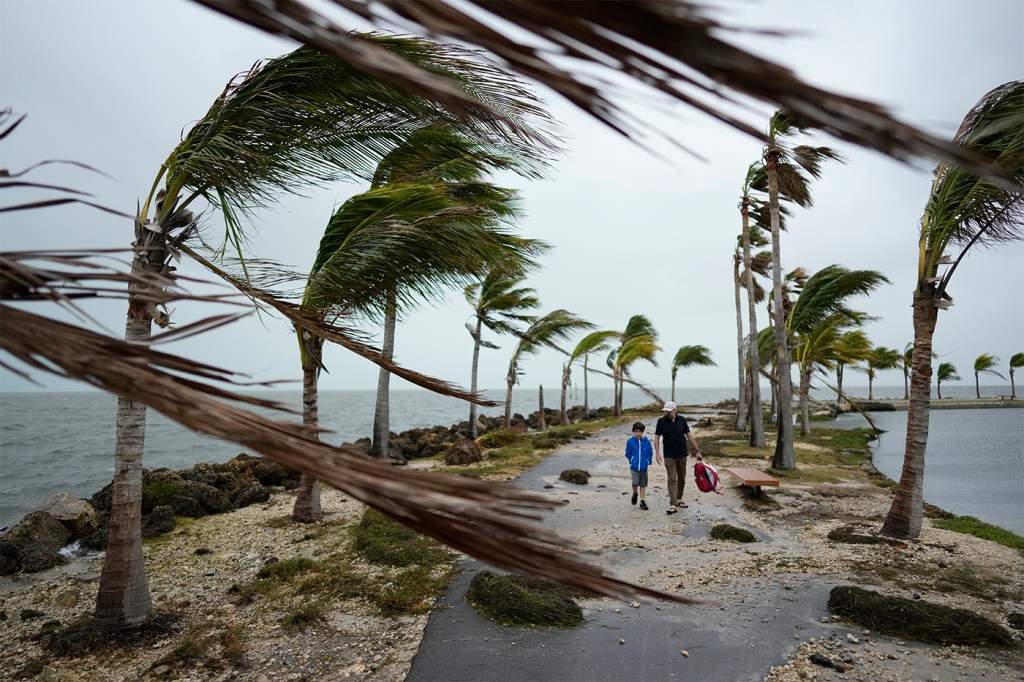Why is 2024 predicted to be one of the most active hurricane seasons in history? And how can communities be more resilient?
“All the predictions from NOAA and university researchers are predicting a very active, some are even saying, extremely active hurricane season,” says Jim Chen, Northeastern University professor.

The predictions are out, and it looks like this year’s Atlantic hurricane season will be one of the most active in recorded history.
In an outlook report released Thursday, the National Oceanic and Atmospheric Administration forecast an 85% chance of an above-normal hurricane season, which runs from June 1 to Nov. 30.
It predicts there will be around 17 to 25 named storms with winds of 39 mph or higher during the six-month period.
“Of those, 8 to 13 are forecast to become hurricanes (winds of 74 mph or higher), including 4 to 7 major hurricanes (category 3, 4 or 5; with winds of 111 mph or higher),” the report reads.
NOAA’s report comes a week after The Weather Company and Atmospheric G2 released their own predictions noting that the “2024 hurricane season will likely be one of the most active on record.”
The companies forecast that 25 named storms, 12 hurricanes and six major hurricanes are expected.

“All the predictions from NOAA and university researchers are predicting a very active, some are even saying, extremely active hurricane season,” says Jim Chen, Northeastern University professor in civil and environmental engineering and marine and environmental sciences. “That’s bad news for a lot of people living along the coast.”
“On average, we have 13 to 14 tropical cyclones (that include tropical storms and hurricanes) a year,” he adds. “But you do have active seasons that could go up to 30.”
Chen says there are many factors that can be attributed to the predicted hyperactivity, including La Nina weather conditions, a phenomenon used to describe “the periodic cooling of ocean surface temperatures in the central and east-central equatorial Pacific,” according to NOAA.
The agency notes that La Nina conditions make for a good hotbed for hurricanes since they make it challenging for wind shears to form in the tropical region.
Another important factor is the warming of ocean temperatures, Chen explains. Ocean temperatures have been on the rise for more than a year, causing great concern for the scientific community and the impact these conditions will have on the formation of hurricanes.
“When the ocean temperature is high, hurricanes gain more energy from the ocean,” he says. “Right now the ocean temperatures, especially in the Caribbean, Gulf of Mexico and the Atlantic, are higher than normal.”
Chen says that the communities that will be most resilient to these weather events will be those not only minimally impacted by the storms once they hit, but also those quickly able to recover in the aftermath.
Featured Posts
He used Hurricane Sandy as an example. When the storm hit New York City in 2012, city officials were not well prepared, and damages were estimated at $19 billion.
“There was a lot of damage to the community. Some areas lost power for more than a week. People died,” Chen says.
The city learned from the disaster, Chen says, and invested heavily in coastal infrastructure and resilience, spending more than $11 billion in federal grants in recovery efforts in the past 10 years.
“People living in New York and along the East Coast are now more resilient to hurricanes than they were before Hurricane Sandy,” he says.
There’s plenty individuals can do to help keep themselves and their loved one informed during these major weather events, Chen says.
The Federal Emergency Management Agency and NOAA are great resources to turn to when seeking the latest information on a particular storm, he notes.
“They look at the whole storm cycle,” he says. “If you live in a low-lying area along the coast, you’ll need to know if you are in the flood zone and whether that area needs to be evacuated during a hurricane. There’s a lot of information out there. People just need to pay attention.”
People should also familiarize themselves with weather terminology and understand the difference between terms like hurricane watch, which means a hurricane is possible within the next two days, and a hurricane warning, which means a hurricane is expected within 36 hours.
It’s also helpful to stock up on food and medicine for at least a few days in cases where a storm is serious and people need to evacuate their homes.
And contrary to what some people may believe, more people die as a result of flooding than from the harsh winds during intense storms, Chen explains.
“People need to pay more attention to the flooding generated by a hurricane,” he says.










